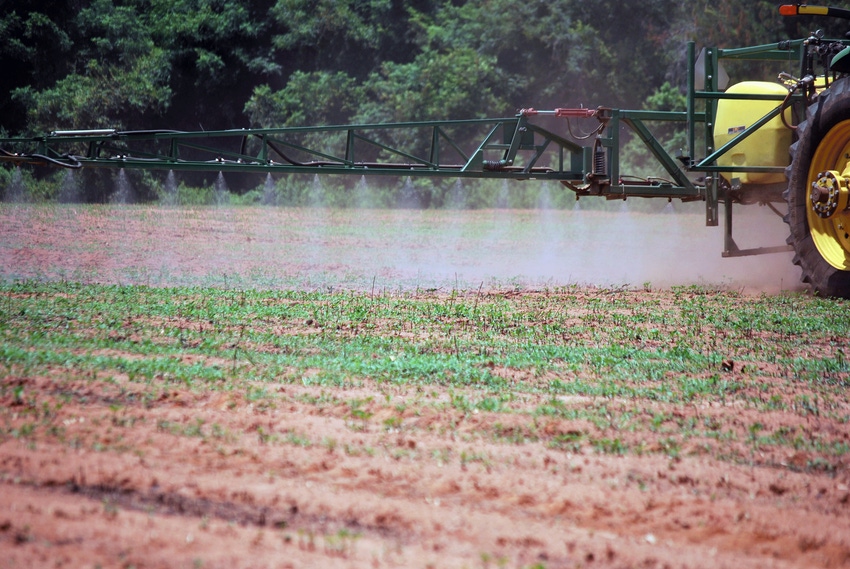
Resistance: The growing threat everyone’s responsible for
Farmers today have access to the best pesticide and fungicide products ever made. To get the consistent, high-quality yields needed to sustain their operations, farmers depend on them. The continued viability of these essential products, however, depends on everyone.

Farmers today have access to the best pesticide and fungicide products ever made. To get the consistent, high-quality yields needed to sustain their operations, farmers depend on them. The continued viability of these essential products, however, depends on everyone.
“Resistance to chemistries is something farmers are keenly aware of and is an ongoing effort to avoid or postpone. We know the cost of losing a product due to resistance. It can be devastating. And we don’t know if or when we will get new chemistries to use on the farm or with current regulatory scrutiny if we will get to keep using products we have now,” said Michael Chafin, farm manager for the Darrell Williams Research Farm at the Sunbelt Ag Expo.
Fungicide use is increasingly common in corn, soybeans and even cotton in the Southeast. Most of the fungicides used belong to only a few at-risk classes of chemistry. Fungicides such as azoxystrobin and tebuconazole are available as generic products, which can lead to reduced cost for growers but can lead to the overuse of a product. This increases the risk of fungicide resistance, says Bob Kemerait, University of Georgia Extension plant pathologist.
(Extension personnel and industry representatives will be speaking about efficient use of chemistries and other valuable production practices at the Sunbelt Ag Expo Field Day July 14 in Moultrie, Ga.)
“Today, more than ever, judicious use of fungicides and nematicides is critical for success in farming. Our yield expectations are much more than they were 16 years ago. We have new diseases in Georgia and we have improved fungicides that better manage diseases and at lower-use rates,” said Kemerait.
But it’s becoming difficult to bring new classes of fungicides to growers. “And that is why the efficacy of fungicides in the strobilurin, triazole, SDHI and benzimidazole classes has never been more critical,” Kemerait said.
How to minimize early development of fungicide resistance
Kemerait says to minimize early development of fungicide resistance:
Always use at-risk fungicides in combination with chemically unrelated fungicides (different modes of action) which are preferably at low risk to resistance. Alternate applications of fungicides and incorporate tank-mixes of unrelated fungicides into a spray program. Growers can insure fungicides belong to unrelated classes by comparing the FRAC codes found on the front of the label.
Restrict the number of fungicide applications and/or total amount applied per season, and to apply fungicides only when necessary.
Maintain manufacturers’ recommended application rates, even if you believe that satisfactory control can be achieved with lower rates.
Avoid post-infection use. Fungicides are most effective when applied before infection has occurred.
Practice integrated disease management by deploying tactics such as crop rotation and use of disease-resistant varieties to reduce the immediate need of fungicides.
Maintain chemical diversity in a disease management program. It is tempting not to do this when less-expensive fungicides within a single class are available; however this can have significant consequences for the future.
In late summer as peanut season ends, farmers wonder if they can stop their fungicide programs and save money and their time by skipping the last one or two applications. Kemerait considers a peanut crop safe when any additional disease is unlikely to affect yield.
"If a peanut grower is three weeks away from anticipated harvest and leaf spot disease is hard to find, a final fungicide application can likely be dropped without loss of yield," said Kemerait. "This is especially true if weather conditions are unfavorable for disease. However, if disease is present and the grower is struggling to maintain control, or if conditions favor disease and threaten the harvest date, then it is important to stick to a full-season program,” Kemerait said.
Herbicide resistance has become the most infamous resistance problem facing agriculture in many parts of the country, especially in the South, where glyphosate-resistant Palmer amaranth was documented 10 years ago. And in the last decade, farmers, industry and Extension programs have been playing catch up to develop different methods to control weeds in agronomic crops. And they have done an exceptional job to overcome the problem, and have done the job at great financial cost.
There has been no new herbicide chemistry developed in more than 20 years, and farmers should not expect any new chemistry, says Stanley Culpepper, UGA Extension weed specialist. The current regulatory scrutiny and the hundreds of millions of dollars it would cost to develop and bring a new chemistry to market makes the chances of any new chemistry virtually zero. A new chemistry today would have to be perfect, and very few things are perfect.
Because there are no new herbicide chemistries on the way, “Seems pretty smart to protect the herbicide chemistry we have today by making wise decisions, implementing diversified herbicide modes of action into an integrated program that uses cover crops, tillage and/or hand weeding,” Culpepper says. “Of course, we still need to be concerned that even if our growers do all the right things to protect current herbicide chemistries in the field today, will the products we do have now survive the current rigorous regulatory processes.”
About the Author(s)
You May Also Like





